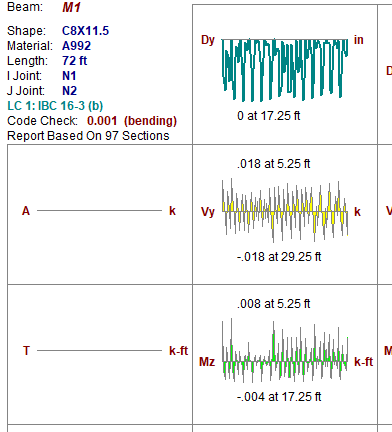Hemi79
Civil/Environmental
- Jul 31, 2013
- 61
So Im attaching a cantilever canopy I'm running. It seems to good to be true and I was wondering whether anyone might look at it and give me some pointers. The canopy only extends (cantilevers) 5 ft and is attached to a masonry wall that has vertical reinforced concrete fill every 32 inches on center. I was hoping the architect would want aluminum but he put it on us to do with steel. Im using a channel against the masonry wall (2 A325 bolts @ 32"O.C.) and Wide Flange beams extending 5 ft. @ 5 ft. O.C. and standing seam panel over them. Any help is appreciated.
Thanks!
ps. I tried using pin connection for the beam connectors and always got instabilities at every cantilevered joint. I figures I'd allow the moment at the connecting end instead (Weld, is this the best approach?
Thanks!
ps. I tried using pin connection for the beam connectors and always got instabilities at every cantilevered joint. I figures I'd allow the moment at the connecting end instead (Weld, is this the best approach?

